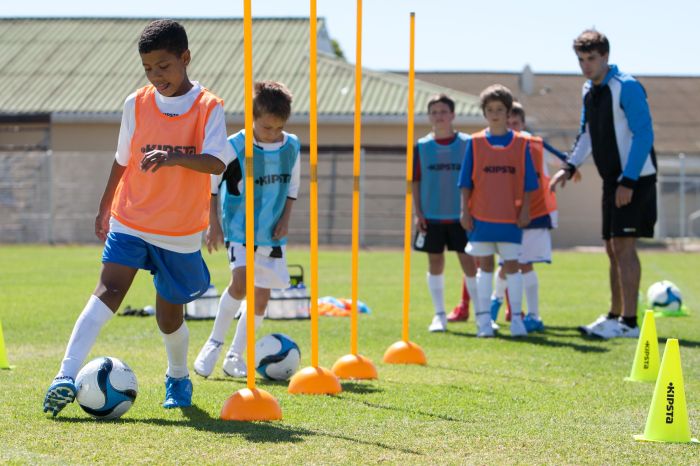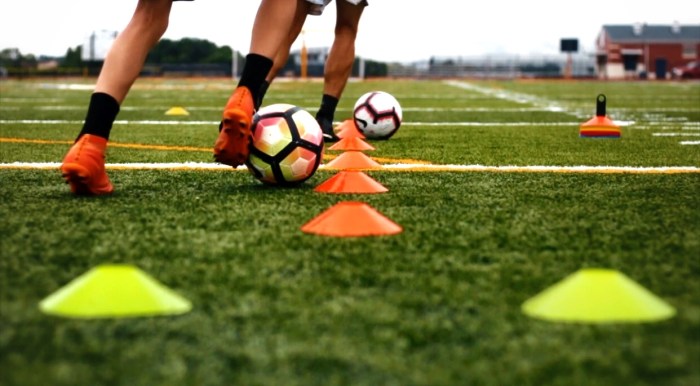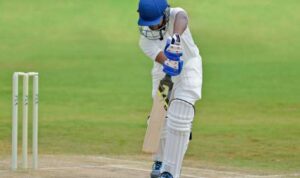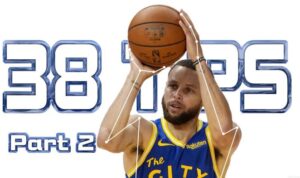Soccer drills, a fundamental aspect of player development, are essential in honing skills and improving performance on the field. From dribbling to shooting, these drills play a crucial role in shaping successful athletes. Get ready to dive into the world of soccer drills and unleash your full potential!
As you explore the various types, importance, design, and implementation of soccer drills, you’ll uncover the secrets behind crafting effective training sessions that propel players to greatness. Whether you’re a coach seeking to elevate your team’s skills or a player looking to up your game, mastering these drills is the key to success.
Types of Soccer Drills
When it comes to soccer drills, there are various types that coaches use to enhance players’ skills on the field. Each type serves a specific purpose in improving different aspects of the game. Let’s take a look at some common types of soccer drills and their significance:
Dribbling Drills
- Cone Dribbling: Involves dribbling around cones placed at different distances to improve close ball control and agility.
- Speed Dribbling: Focuses on dribbling at high speeds to enhance players’ acceleration and change of direction.
- 1v1 Dribbling: Emphasizes beating an opponent in a one-on-one situation, enhancing players’ confidence and decision-making skills.
Passing Drills
- Triangle Passing: Involves players passing the ball in a triangular pattern to improve accuracy and timing.
- Long-Range Passing: Focuses on players making accurate long-distance passes to switch play and create scoring opportunities.
- Quick Passing: Emphasizes fast-paced passing sequences to improve players’ decision-making and ball circulation.
Shooting Drills
- Finishing Drills: Focuses on players’ ability to score goals from different positions on the field, improving their accuracy and composure in front of the goal.
- Volleys and Half-Volleys: Enhances players’ technique in striking the ball out of the air, improving their ability to finish crosses and long balls.
- Free-Kick Drills: Involves practicing free kicks from various distances and angles to improve players’ set-piece proficiency.
Importance of Soccer Drills
When it comes to soccer training, drills play a crucial role in helping players improve their skills and overall performance on the field.
Enhancing Technical Abilities
Drills are essential for players to enhance their technical abilities such as dribbling, passing, shooting, and ball control. Through repetition and practice, players can perfect these skills and become more efficient on the field.
- Drills focusing on passing accuracy help players develop precision in their passes, leading to better ball distribution during games.
- Dribbling drills improve a player’s ball-handling skills, allowing them to maneuver through defenders with ease.
- Shooting drills help players work on their shooting technique and accuracy, increasing their chances of scoring goals during matches.
- Ball control drills enhance a player’s ability to maintain possession and make quick decisions under pressure.
Famous Players and Drills
Many famous soccer players credit drills for their success and development as athletes. These players have dedicated countless hours to practicing drills, which have helped them reach the top of their game.
Cristiano Ronaldo, known for his exceptional dribbling and goal-scoring abilities, attributes his success to rigorous training drills focused on improving his skills.
Lionel Messi, regarded as one of the greatest players of all time, has emphasized the importance of drills in shaping his technical prowess and overall performance on the field.
Megan Rapinoe, a standout in women’s soccer, has highlighted the role of drills in honing her passing accuracy and decision-making skills during matches.
Designing Effective Soccer Drills

Creating soccer drills that are both effective and engaging requires careful consideration of various key elements. These elements include the specific skills or techniques you want to focus on, the age and skill level of the players, and the overall objectives of the drills.
Key Elements to Consider
- Identify the specific skills or techniques you want to improve.
- Set clear objectives for each drill to ensure focus and progress.
- Consider the age and skill level of the players to tailor the drills accordingly.
- Ensure the drills are challenging but achievable to keep players motivated.
- Provide feedback and encouragement to help players understand and improve.
Tailoring Drills for Different Age Groups and Skill Levels
- For younger players, focus on basic skills and keep drills simple and fun.
- Adjust the intensity and complexity of drills for older or more advanced players.
- Modify the size of the playing area or the rules of the drill to suit different skill levels.
- Encourage teamwork and communication in drills to enhance overall player development.
Creating Engaging and Challenging Drills
- Include elements of competition or game-like scenarios to make drills more engaging.
- Vary the drills regularly to keep players interested and avoid monotony.
- Incorporate small-sided games or scrimmage situations to simulate real match conditions.
- Use props or equipment creatively to add excitement and challenge to the drills.
Implementing Soccer Drills in Training Sessions

When it comes to implementing soccer drills in training sessions, there are several best practices that coaches can follow to ensure effectiveness and player development.
Introducing and Conducting Drills, Soccer drills
Before starting a drill, coaches should clearly explain the objective and proper technique to players. Demonstrating the drill can also help players understand what is expected of them.
- Organize drills based on the specific skills or tactics you want to focus on.
- Ensure that players are divided into appropriate groups to maximize participation and learning.
- Set clear expectations and rules for each drill to maintain focus and discipline.
Ensuring Correct Execution
Coaches can ensure that drills are executed correctly by providing feedback and corrections throughout the session. It is essential to observe players closely and intervene when necessary to make adjustments.
Offer positive reinforcement for correct execution and constructive criticism for mistakes to motivate players to improve.
- Encourage open communication and questions from players to clarify any confusion about the drill.
- Use video recordings or demonstrations to show the correct way to perform the drill.
- Rotate players in different positions or roles within the drill to enhance versatility and understanding of the game.
Monitoring Player Progress
Coaches need to track player progress through drills to evaluate individual improvement and overall team development.
- Keep detailed records of player performance and areas for improvement to tailor future training sessions.
- Conduct periodic assessments or evaluations to measure skill development and understanding of concepts introduced through drills.
- Provide regular feedback to players on their progress and areas of strength and weakness to maintain motivation and focus.


